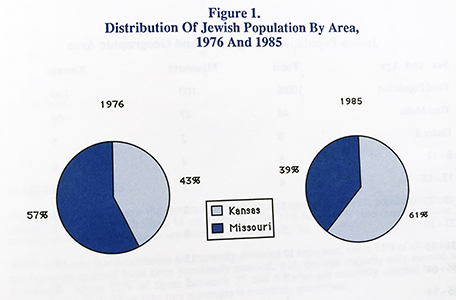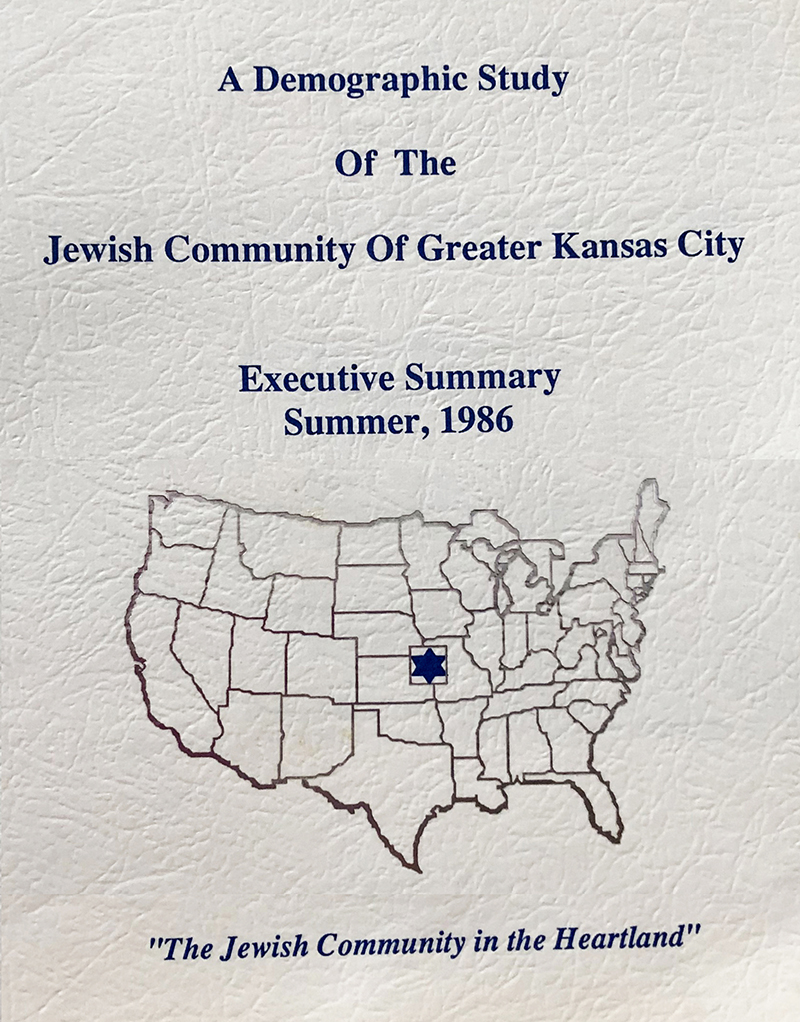In 1985, Ronald Reagan was president, a stamp cost $0.20 and the Kansas City Royals celebrated their first World Series win. 1985 was also the last time a comprehensive study of our Jewish community was conducted (its findings were published in the summer of 1986), and a lot has changed in the 36 years since then.
One statistic that surely seems dated is that in 1985 only 50% of women ages 35 to 44 reported being employed full time. And although the study correctly predicted that the Jewish population would continue migrating into Johnson County, at the time the epicenter of the community was at 79th Street and Roe Avenue in Prairie Village.
To better understand our current community and its needs, Jewish Federation of Greater Kansas City is sponsoring a new study; it is expected to launch in April.
“We’ve needed a study for a very long time,” said Andi Milens, Federation’s senior director of community building. “Anecdotally we know that our community has changed, and now we’re looking to get an accurate picture of Jewish life in Kansas City in 2021.”
“We’re very excited about the study and to have this data,” added Helene Lotman, Federation’s president and CEO. “It will help Federation and our community institutions plan for the future, both independently and collaboratively.”
The study will look at demographics, including: age; household makeup; affiliations and involvement with community institutions; engagement with Jewish education (formal and informal); and connections to Israel. The study will also look at issues surrounding older adults and poverty.
Having current data on the elderly population is key for agencies like Jewish Family Services of Greater Kansas City, which provides older adults with direct services —including Help@Home, Tech Connect and JET Express.
According to Don Goldman, JFS executive director and CEO, estimates from around the country of how many people want to age in place and stay in their homes vary drastically. The numbers range from 60% to 90% and are very community specific.
“We’d like to understand just how large the (elderly Jewish) population is,” Goldman said. “We have a good idea of the size of the population we serve, but we want to see if we’re serving the size of the community population we think there are.”
Having up-to-date data will allow for better strategic planning and use of resources, meaning community organizations can better meet the current and future needs of our community.
“What we’ve had to do in the past, to be frank, is guess and get informal feedback and do focus groups,” Goldman said. “People ask us questions like, ‘Are you serving all those Jews in the community who are in financial distress?’ but we really don’t know how many Jews in financial need there are. So, we’ve estimated that we’ve served 90% of Jews in financial distress over the last five years.”
Data from the study could help JFS and other Jewish organizations identify populations in the community that are either unidentified or underserved, as well as discover specific unaddressed needs.
The study will be conducted by the Cohen Center for Modern Jewish Studies at Brandeis University and its partner, the National Opinion Research Center at the University of Chicago. Brandeis also conducted the 1985 community study.
Federation’s vice president and chief operating officer, Derek Gale, said Brandeis was selected because of its experience, methodologies and the strong recommendation from a number of other Federations in similar Jewish communities.
The National Opinion Research Center will be contacting members of the Jewish community in the Kansas City metro area for the study. Seven counties are included in that area: Cass, Clay, Jackson, Johnson, Miami, Platte and Wyandotte.
Federation worked with its partner agencies and local congregations to create a master list of the “known Jewish community.” Researchers will use that list to reach out via mail, phone and email to get people to participate in the survey.
Researchers will also seek out unknown members of the Jewish community (those not affiliated with a congregation or community organization).

“This is super exciting. It is critical to us that those who are marginalized and those who have felt excluded from mainstream Jewish spaces are sought out and counted in this study,” said Amy Ravis Furey, director of Avodah Kansas City. “As we work towards the goal of creating a more inclusive, multiracial and welcoming community for all kinds of Jews, being counted, reflected and affirmed is the first step.”
Both Milens and Gale encouraged community members to participate in the study, but there is the option to opt out.
The study will be based on a stratified random sample representative of the estimated 18,000 members of the Kansas City Jewish community. Gale said they’re looking to receive 750 responses in this primary sample and a secondary sample will get a few hundred responses, totaling 1,000 to 1,250. For comparison, the 1985 study received 600 responses.
Federation expects to roll out the results of the study by the end of this year. Gale is optimistic that it won’t take another 35 years for the next one.
“My personal hope is that we’ll do this and see a lot of value from it and that we will plan for doing this every 10 years or so going forward,” Gale said, “and it will be much easier to do once we have new data and a good baseline.”



